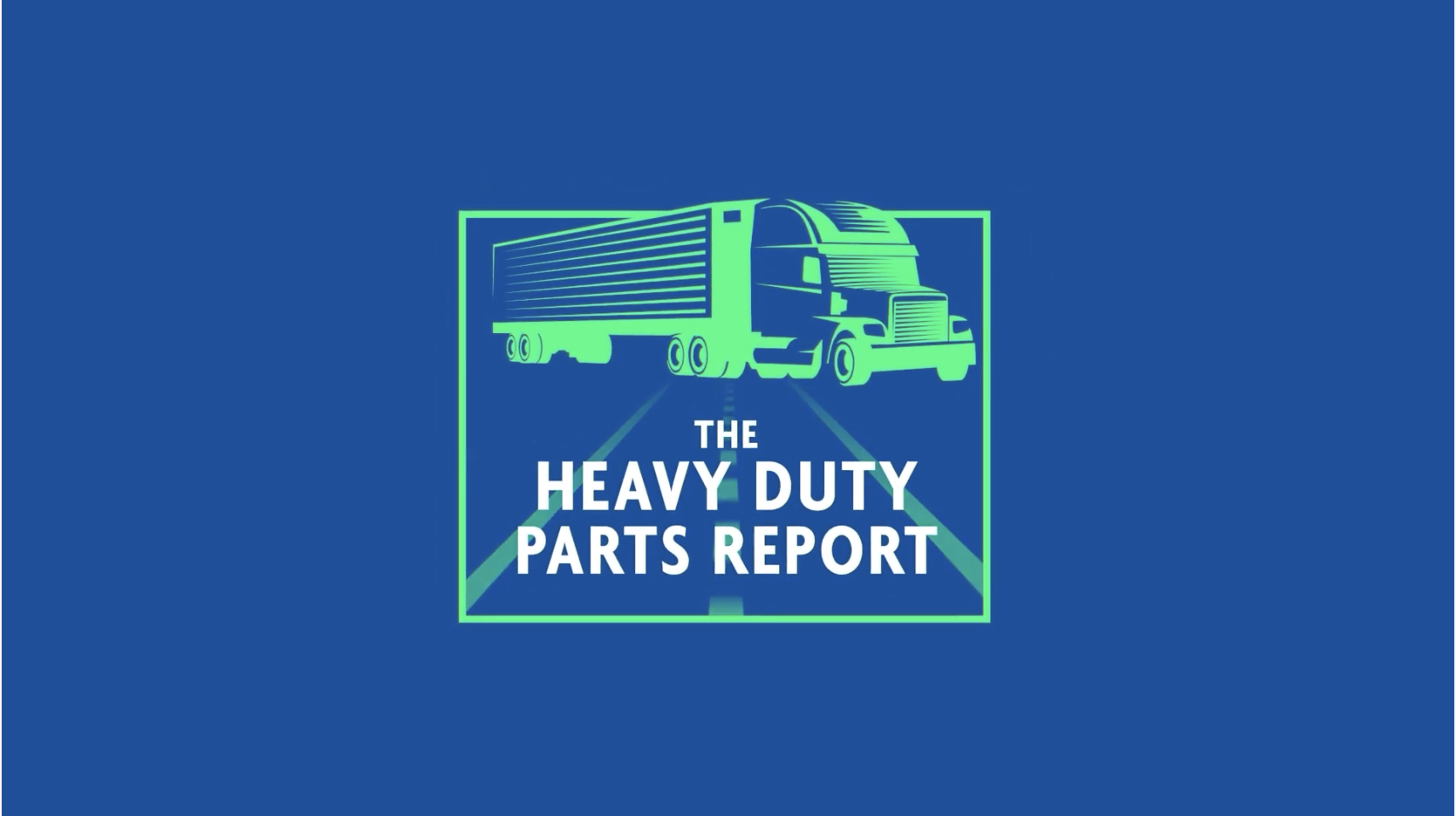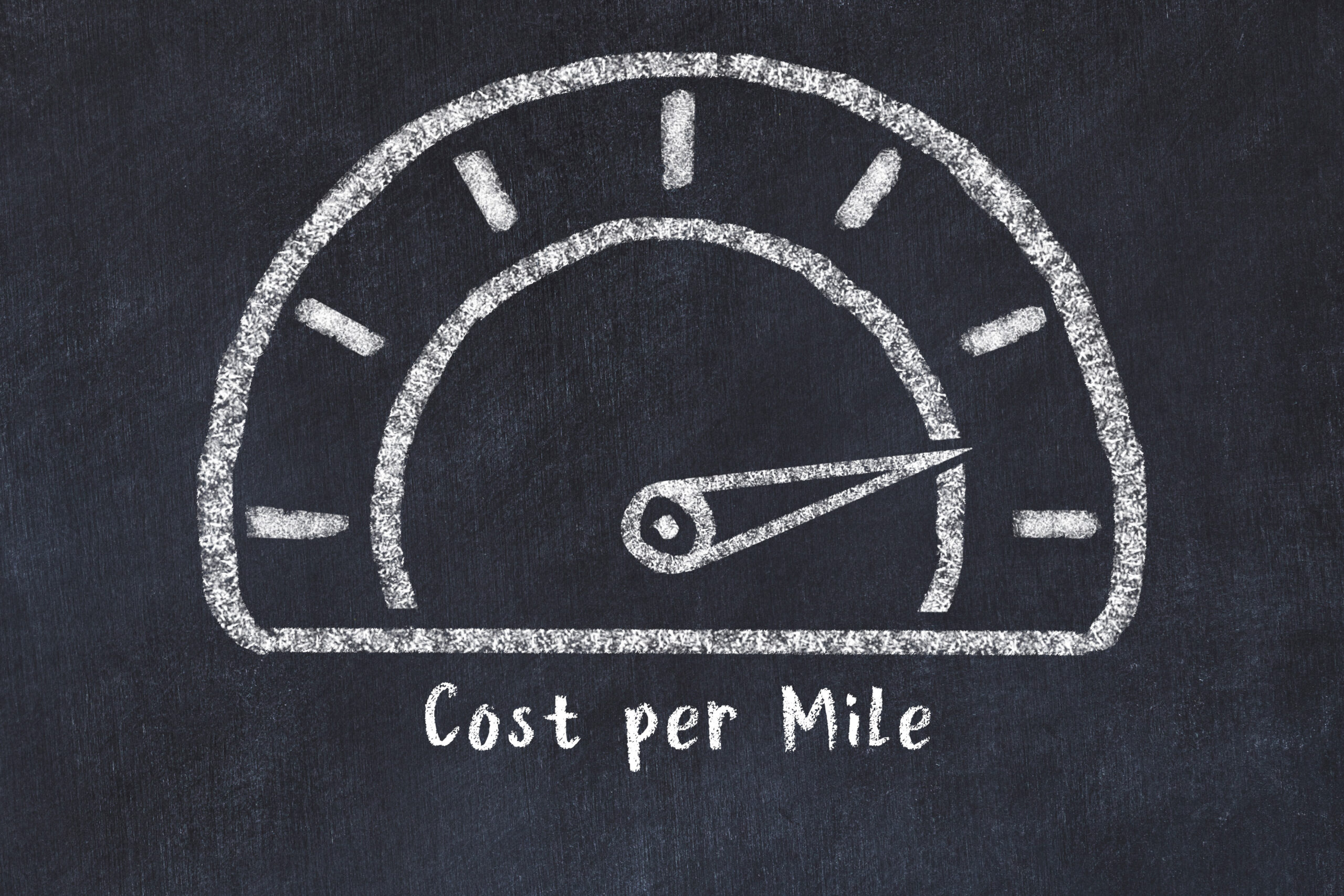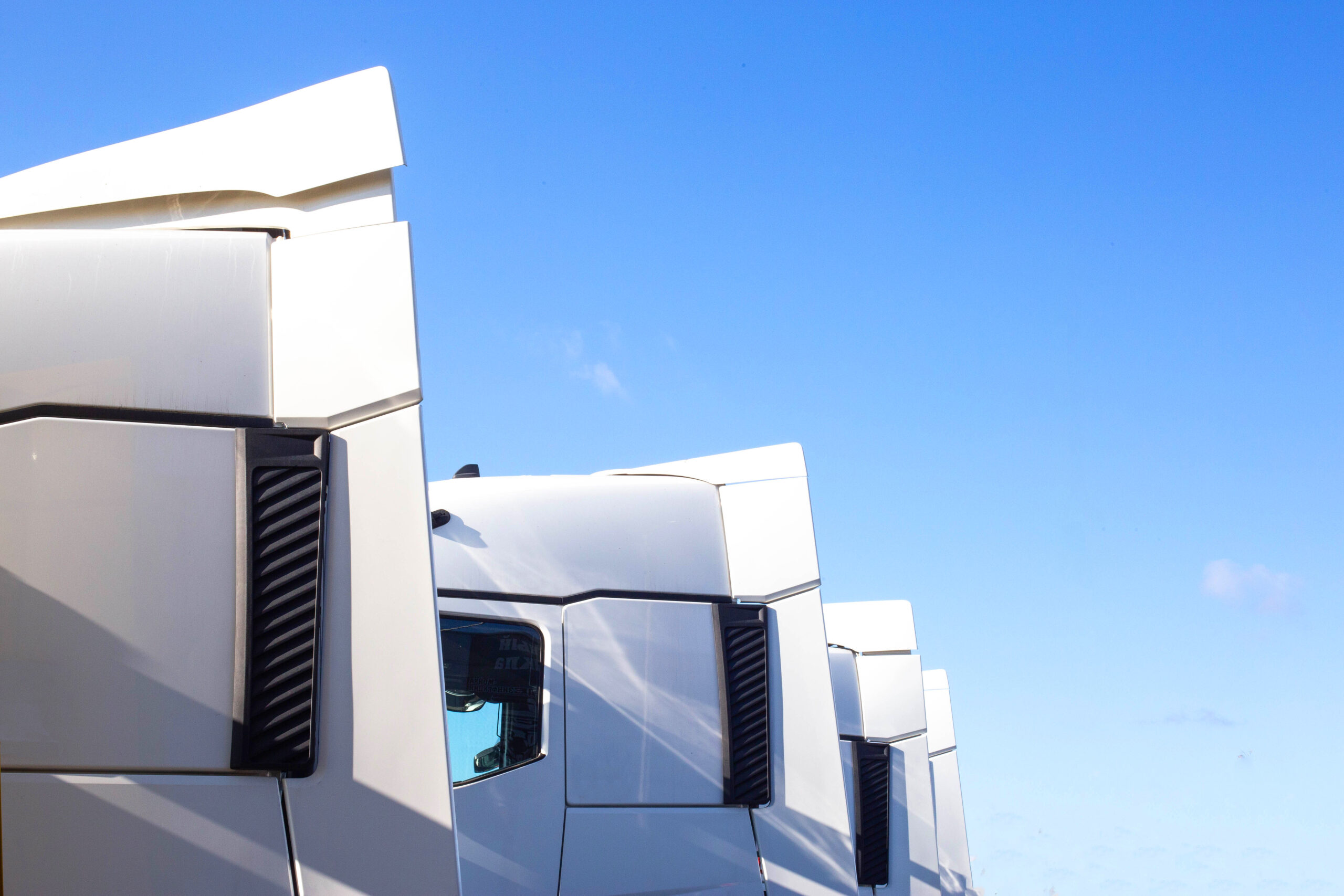Cut Your Average Trucking Cost per Mile With These 4 Aerodynamic Tips
If you run a trucking fleet, there is one important metric that can have a great impact on your bottom line. The average trucking cost per mile reflects your operation efficiency, and keeping it under control is essential.
With trucking costs at the highest in the 15-year history of ATRI’s Ops, controlling what you can is crucial. You might not be able to prevent a road closure that adds more miles or stop the increase in fuel prices, but there is one thing you can do to reduce your average trucking cost per mile. And it begins with aerodynamics.
In the post, we’ll define the average trucking cost per mile, learn how to calculate it, and discover our aerodynamic strategies to help reduce your average trucking cost per mile and start increasing profits.
What Is the Average Trucking Cost per Mile?
In the trucking industry, the cost per mile refers to the financial cost of driving a truck a single mile.
Knowing this metric can give fleet owners and managers an advantage. Land Line reported that those who knew their operations costs benefited from $1.15 per mile and $1500 more per trip.
Knowing their average trucking cost per mile helped these companies make more data-driven decisions, such as which routes, customers, and trip types are more profitable, and implementing new strategies to help reduce operational expenses.
Calculating Trucking Cost per Mile
You can calculate the trucking cost per mile with the following formula:
Trucking cost per mile = total costs (expenses) / total number of traveled miles
To find your total costs, you’ll need to combine several cost components. These components include general business expenses like rentals and utilities and administrative costs like accounting, taxes, and salaries. You should also include trucking expenses such as fuel, repairs, tolls, and insurance.
The total number of traveled miles is the entire distance a truck has traveled in a specific timeframe, usually a year.
It can be painful to track expenses manually, especially if your trucks operate hundreds or thousands of miles away. With the development of technology and tools, collecting data and performing analysis much easier, providing detailed information to improve your operation’s efficiencies.
What Role Does Aerodynamics Play in Cost per Mile?
Making your trucks more aerodynamic can help reduce fuel waste. The more aerodynamic a truck is, the less energy it uses to move, which reduces the average cost per mile for trucking.
NACFE found that improved aerodynamics in commercial tractors is one of the biggest contributors to reduced fleet operating costs. The efficient use of energy also helps reduce harmful emissions.
You can improve the aerodynamics of the tractor with items such as tractor-trailer gap devices, chassis fairings, and wheel covers. Using a tractor-gap device helps close the gap between the tractor and the trailer to improve aerodynamics and can help reduce fuel costs by up to 5%.
You can also use a combination of adding more aerodynamic parts, such as bumpers, mirror and cameras, and wheel covers, all of which helps to streamline the airflow and improve fuel efficiency. These changes can improve fuel efficiency, creating savings of up to 10%. Also, the less fuel the truck burns, the longer its engine will last.
4 Aerodynamic Strategies for Reducing Average Trucking Cost per Mile
Making aerodynamic improvements to trucks is one thing you can control. They are an investment that brings long-term savings. Here are four aerodynamic strategies to reduce the average cost per mile for trucking.
1. Try TruckWings
As per AFDC, reducing the drag or resistance of a vehicle when traveling at high speed lowers the engine’s load and improves fuel economy.
One way of helping to reduce drag is to close the gap between the cab and the trailer. TruckWings make this possible. Simply mount it to the cab, and when the truck travels over 52mph, it automatically deploys to close the gap and improve aerodynamics.
Ryder Systems implemented TruckWings in their fleet, saving their MPG by 3-6% with a 12-18 months ROI.
2. Optimize fuel efficiency
Because of the size and shape of a truck, the faster it travels, the more energy is required to push through air resistance. Implementing multiple devices can reduce the aerodynamic drag of a truck, lowering fuel consumption by more than 12%.
You should focus on the four main areas that create the most aerodynamic drag on the tractor-trailer:
- The front of the tractor
- The gap between the tractor and the trailer
- The under-body of the trailer
- The back of the trailer
3. Keep up with routine maintenance
Simple maintenance can help ensure your truck is aerodynamic by optimizing its performance and minimizing drag and sway. Make sure your trucks have the correct air pressure, the right motor oil levels, and change air filters when required.
Don’t forget the importance of accessories when performing maintenance. Damaged mud flaps and wheel covers can reduce the efforts of streamlining the airflow around the truck.
In addition, it’s important to ensure the roof fairing is in good condition. Roof fairings can improve fuel economy, resulting in $6,900 in savings annually.
4. Consider wide-base tires
This approach is less common, but you can reduce tire costs and improve aerodynamics simultaneously by using wide-base tires. Wide base tires help to reduce rolling resistance due to eliminating two side walls, and they are slimmer, reducing the surface area that makes contact with the road.
Optimize Aerodynamics and Improve Profitability With TruckLabs
Optimizing the aerodynamics of your trucking fleet can help reduce the average cost per mile for trucking. And in under two hours, TruckWings can help you to save 3-6% of fuel costs.
If you want to join five of the ten largest fleets in North America, enjoying improved fuel economy and less emissions, schedule a free consultation.
8 Trailer and Semi Truck Aerodynamic Kits That Save Fleets Money
Intro
Fleet managers are always looking for ways to cut costs without compromising safety and service. Fuel costs for a single Class 8 truck can exceed $70,000 a year, so improving fuel efficiency is a top priority for fleet managers. One way to do that is to install semi truck aerodynamic kits on every truck.
Of the available energy in any big rig, 53% goes toward overcoming aerodynamic drag. Drag occurs through friction — when air contacts the surface of a moving truck — and through pressure, when airstreams separate as a truck moves through them. Semi truck aerodynamic kits can reduce both types of drag.
In this post, we’ll cover eight types of aerodynamic kits that can help fleet managers improve fuel efficiency and decrease fuel expenditures.
What Are Semi Truck Aerodynamic Kits?
Semi truck aerodynamic kits are add-ons that reduce drag at highway speeds. Some aerodynamic kits are low-tech accessories, while others use software to intelligently deploy anti-drag hardware and collect data about truck performance.
Kits may be available as part of an upgrade package from OEMs, or they may be after-market products. Fleet managers looking to maximize the benefits of semi truck aerodynamic kits might outfit trucks with both OEM and after-market products.
8 Types of Trailer and Semi Truck Aerodynamic Kits
On a Class 8 truck, the tractor accounts for the most aerodynamic drag (66%), followed by the trailer axle and wheels (18%), and trailer body (16%). The greatest fuel efficiency gains come from using aerodynamic kits for each of those areas.
Wheel Cover Kits
Available for both tractor wheels and trailer wheels, these kits reduce drag by preventing air from entering and exiting the wheel recesses. Wheel covers are easy to install, and some brands have quick-release technology for tire access.
Vortex Generators
Vortex generators are small triangular devices that attach to the trailing edges of the tractor and trailer, and the trailer roof edges, depending on the product. They reduce drag by preventing air streams from separating as the truck moves through them.
A study by The Green Truck Initiative, an independent Australian organization that evaluates the merits of clean vehicle technologies, found that vortex generators did provide some efficiency gains. However, the results of testing varied significantly, so the study could not quantify the benefits of vortex generators.
Aero Bumpers
Because the bumper is the first part of the truck that cuts through air, its shape can affect how air moves across the truck body. Smooth “aero” bumpers — also called drive fenders — help direct air away from the truck rather than over the cab.
Trailer Tails
Also called boat tails, trailer tails attach to the rear of the trailer to create a tapered end. First-generation trailer tails required drives to manually open and close them, which was a barrier to widespread adoption. Today, most trailer tails open automatically when a truck reaches a certain speed, although some still require manual effort to close.
Trailer Skirts
Trailer skirts are flexible panels that attach to the side edges of the trailer and reduce ground clearance. These devices reduce the amount of air beneath the trailer, which decreases the wake behind the wheels.
Chassis Fairings
Chassis fairings are similar to trailer skirts, but they attach to the cab, enclosing the fuel tank and other components that can cause drag.
Roof Fairings
Available as either OEM or after-market products, roof fairings are sloped attachments for the top of the cab that create a smooth transition to the trailer. Some roof fairings may be compatible with side panels that further reduce drag by narrowing the gap between the tractor and trailer.
While side panels can reduce drag, they can also interfere with low-speed maneuverability, so they may not be ideal for urban driving.
TruckWings
TruckWings is a fully automatic device that deploys at speeds above 52 mph to close the gap between tractor and trailer, reducing drag and trailer sway. When speed drops below 50 mph, the wings collapse flat against the trailer, so they don’t interfere with low-speed maneuverability.
TotalSIM US, an independent organization that tests aerodynamic devices, verified TruckWings’ claims of 3-6% fuel savings, using computational fluid dynamics. That benefit saves large fleets millions per year on fuel costs and reduces carbon dioxide emissions by 20,000 lbs/year, per truck.
The Best Way to Improve Aerodynamics
NACFE notes that there are many variables that impact the effectiveness of aerodynamic devices, and most testing occurs in “controlled, focused operating conditions.” That means results of testing might not align with the real-world ROI of certain semi truck aerodynamic kits.
The telematic technology that powers TruckWings collects and stores data for every TruckWings-equipped semi, so customers can see the benefits. To date, TruckWings has proven its value over nearly 624 million driving miles. And when you combine TruckWings with other aerodynamic devices, the fuel savings are even greater.
TruckWings isn’t just for diesel-powered trucks — it also helps electric trucks run farther on a single charge. That means TruckWings is an investment that can grow with fleets as they retire combustion engines and switch to greener technology. Learn more about how we can help you improve efficiency and reduce your carbon footprint.
How Technology Improves Fleet Fuel Management
Some people think of fuel costs as a “necessary evil” — after all, if you’re running a business that depends on a stable fleet of trucks, there’s little that you can do to avoid that expense. However, even though the price of diesel may be beyond your control, you can improve how your trucks use fuel to reduce your overall costs.
In this post, we’ll talk about how fleet fuel management reduces fuel waste, increases efficiency, and gives you greater insights into day-to-day operations.
What Is Fleet Fuel Management?
Fleet fuel management is the systems, processes, and procedures that monitor the way a fleet consumes fuel. That may involve manual data entry, cost forecasting, and the planning and oversight of truck maintenance.
What Are the Challenges in Fleet Fuel Management?
These are some of the most common challenges that fleet fuel management professionals face:
Recordkeeping
In order to guarantee proper recordkeeping, drivers need to be able to log fuel usage properly. Not only is manual tracking difficult, but it is also a process prone to human error or even simple misunderstandings.
Fuel Fraud
Another major challenge that a lot of organizations face is fuel fraud. Fleets are becoming an increasingly popular target for fuel theft because anything obtained by someone with malicious intentions can be resold at a profit. Fuel theft can amount to as much as 10% of an organization’s overall fuel budget — hardly a “cost of doing business” at that point.
Nationwide, approximately 81% of fuel theft happens within the company. Drivers could be siphoning diesel fuel from their work trucks for personal use, or using their employer-issued fuel card to buy fuel for their own vehicles. Fleet managers need a way to identify this type of activity — or prevent it from happening in the first place.
Overseeing Maintenance Schedules
Fleets must be maintained to increase the longevity of each truck. Keeping track of every truck’s maintenance schedule can be a major challenge, but without regular maintenance, truck fuel efficiency declines.
Even something as seemingly simple as not putting enough air in the tires can cause trucks to use more fuel than they should. The same is true of a truck’s HVAC system during the hot summer months. The harder the HVAC system has to work due to inefficiencies, the more fuel the truck will use. Multiply that by the total number of trucks in the fleet, and you begin to get a sense of just how costly things can quickly get.
Fluctuating Fuel Costs
With the price of fuel totally outside the control of a business, and with prices fluctuating wildly throughout the year, it makes it difficult to accurately forecast fuel costs.
Solutions for Fleet Fuel Management
Thankfully, there are a variety of different fleet fuel management solutions that can help you manage costs. You may want to use a combination of these methods to help generate as much operational savings as possible.
Mobile Fueling
While your organization will pay for the service associated with mobile fueling, it still brings with it a wide range of different cost-benefits. For example, your drivers don’t have to waste fuel (or time) by diverting from their route to fuel up, and you can fuel trucks during scheduled downtime.
With mobile fueling, you know the exact CPG for every truck, which is a big advantage over diesel costs that vary based on the location of fuel stations.
Fuel Apps
There are many different fuel apps to choose from depending on your needs. Typically, drivers get a fuel card, a sticker, or some type of contactless payment method that links to an app. When they purchase fuel, that information automatically syncs to the app. Fleet managers can see and manage fuel costs within the app, as well as set spending limits in real time.
Fleet Fuel Management Software
A fleet fuel management system helps to automate a lot of the processes outlined above. It helps monitor fuel usage for individual trucks and the fleet as a whole. This gives organizational leaders access to the accurate, actionable insight they need to cut fuel-related costs and boost efficiency.
Dynamic Routing
Routing software optimizes routes and reacts in real time to unexpected road closures, traffic, and hazards. That means drivers have instant access to the most efficient route and spend less time idling (and wasting fuel).
Telematics
Fleet fuel telematics solutions are also a great way to gather insights into how your vehicles are using fuel and energy. Telematics can identify fuel-wasting habits like idling, speeding, and abrupt braking.
You can also use telematics to monitor diesel exhaust fuel (DEF) levels. Maintaining the appropriate DEF level is important for compliance with emission regulations and avoiding mechanical breakdowns.
Aerodynamic Improvements
Improving aerodynamics through attachments on the side, the underbody, and on other areas of a truck can improve fuel efficiency.
TruckWings is one such product. It’s a tractor-mounted aerodynamic device that closes the gap between the cab and the trailer to reduce drag and improve stability, generating fuel savings of between 3% and 6% on average.
That savings can amount to thousands of dollars per truck, or millions of dollars per fleet.
See the Results
One of the largest fleets in North America used TruckWings to decrease its fuel costs and improve operational efficiency. Learn more about how this 235,000-truck fleet got results with TruckWings.



